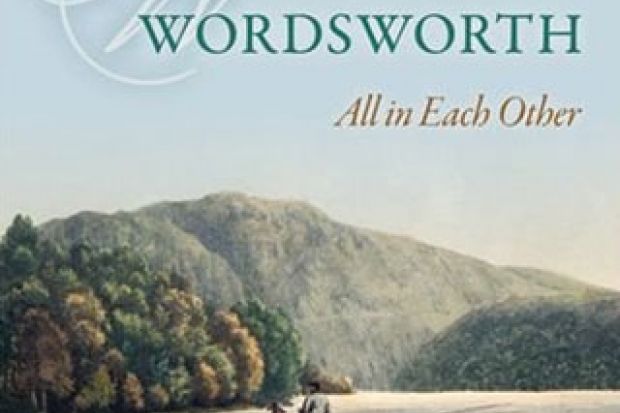The title of Lucy Newlyn’s gentle book on William and Dorothy Wordsworth is taken from a letter addressed to the brother-sister pair by their friend, Samuel Taylor Coleridge. “You have all in each other”, he whines, “but I am lonely, and want you.” Writing at the end of 1798, the year of publication of Lyrical Ballads, which featured poems by both men, Coleridge’s sense of exclusion might have been keenly felt, following that period of close collaboration with William.
Coleridge cuts a plaintive figure here, bobbing up intermittently, pawing at the edges of an intimacy in which he could only minimally share. But as Virginia Woolf, an admirer of William and an early devotee of Dorothy, explains, theirs was “a strange love, profound, almost dumb…as if brother and sister had grown together and shared not the speech but the mood, so that they hardly knew which felt, which spoke, which saw”. Newlyn describes it as a “deep, almost exclusive intimacy” in this nicely companionable book. She is careful, fond, even reverential in delineating this sacred sibling relationship. “Walking, talking, remembering and grieving” together, Dorothy, like Coleridge, makes William’s creative process communal. And although the book attends to Dorothy’s own writing, Newlyn’s primary focus is their concern for each other and the “commerce of spirit” that sustained them both throughout their long lives.
Any suggestion of something improper in this intimacy is given short shrift. Eight lines into the book’s preface, Newlyn concedes the circulation of such rumours, but dispatches them rather brusquely. She opts instead for a doggedly sensible exploration of the mutual “intense emotional and spiritual need which arose out of circumstances unique to their family history”. The book makes this case persuasively, conscientiously tracking and documenting their early life. Parted as children after the death of their mother, they grew up separately, only fleetingly reuniting as adolescents. Dorothy’s was the frustratingly quieter life, sequestered with indifferent relatives, while William studied at the University of Cambridge, travelled Europe, fathered a child, and dabbled in radical politics. In 1799, they set up home together, and Newlyn reads the lifelong intimacy that followed as an extended effort at repairing the damage of that early estrangement.
Newlyn’s expertise makes her a confident guide, and her knowledge deepens some familiar ways of understanding William’s work. For readers well versed in Romantic poetry, William’s famous sense of place is heightened by Newlyn’s account of traumatic familial dislocations; the idea of “home” is for him loaded with importance and longing. As Newlyn asserts, the Lake District fulfilled for him some profound psychological need. She reminds us that together the Wordsworths make this place their home, that it is an act of will rather than romantic happenstance, expressed for perpetuity in William’s work but also in Dorothy’s diaries.
She is scrupulous too in noting that Dorothy’s position is not simply that of amanuensis to William’s genius. Indeed, she rebukes critics who overlook Dorothy’s “individual presence – the details she provides, her eyes”. Certainly, Dorothy’s Alfoxden journals attest to a writer feeling for her own distinctive voice. Yet, although William concedes that Dorothy is “seen, heard and felt, caught at every turn”, her ultimate function is to present to him his “true self” (The Prelude, XI). When Newlyn does consider Dorothy independently of William, she recognises in her a predecessor of Woolf and a radical correlative to Emily Dickinson. Tellingly, though, she also notes how Dorothy’s Grasmere journal was interleaved with drafts of The Prelude: brother and sister writing on the same pages, all in each other again.
Near the end of the book, Newlyn recounts a curiously theatrical scene with a wedding ring passed between brother and sister on the morning of William’s marriage. The incident reads very strangely indeed, and even Newlyn’s rationalisation cannot settle a certain unease. She is probably right to prefer the evidence of an “intense” relationship over speculations of an incestuous one, and her reverence for the Wordsworths makes this a glowingly burnished account. But theirs was by no means an ordinary relationship and there is a certain naivety in her depiction of a pure and selfless sibling sympathy, unblemished by petty quarrels or disaffection. And yet it is easy to believe that confronted by Dorothy’s dementia in old age, William would indeed have made “therapeutic use of their lifelong habit of remembering”, anticipating modern medicine and tending to her to the last. Newlyn’s is an affectionate and moving account of a remarkable bond unbroken.
William and Dorothy Wordsworth: All in Each Other
By Lucy Newlyn
Oxford University Press, 400pp, £19.99
ISBN 9780199696390
Published 12 September 2013
Register to continue
Why register?
- Registration is free and only takes a moment
- Once registered, you can read 3 articles a month
- Sign up for our newsletter
Subscribe
Or subscribe for unlimited access to:
- Unlimited access to news, views, insights & reviews
- Digital editions
- Digital access to THE’s university and college rankings analysis
Already registered or a current subscriber?




